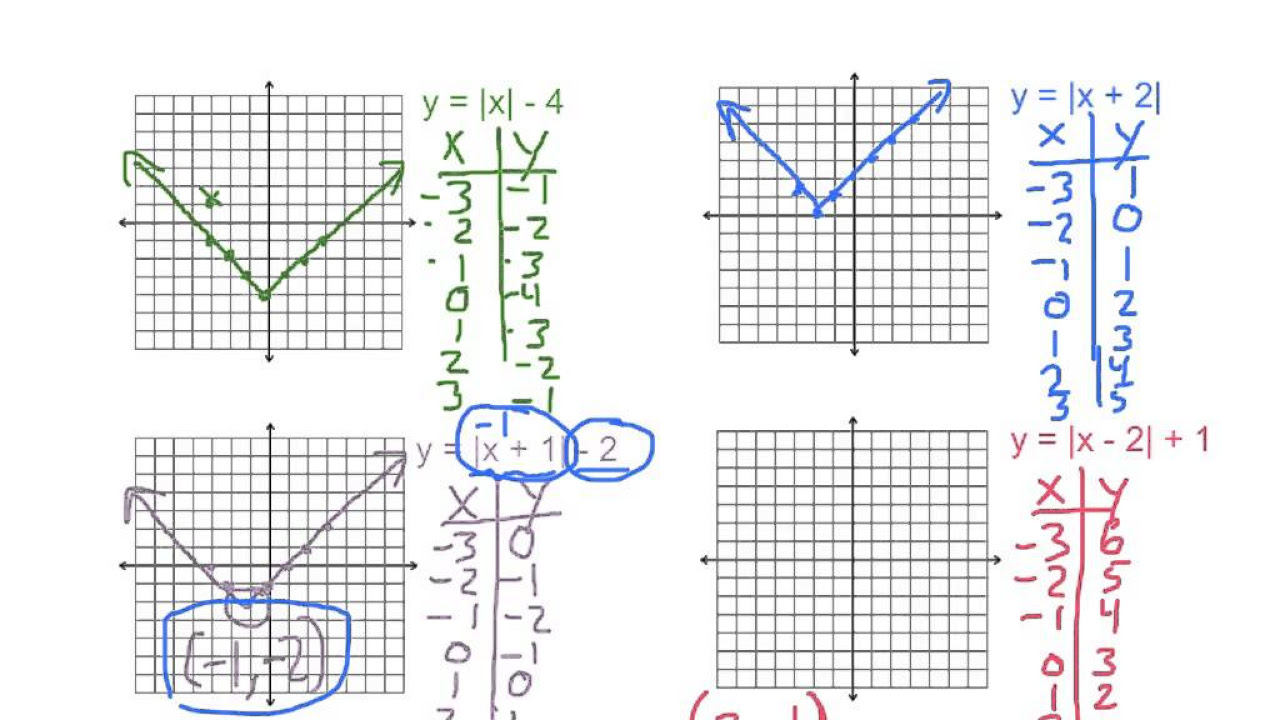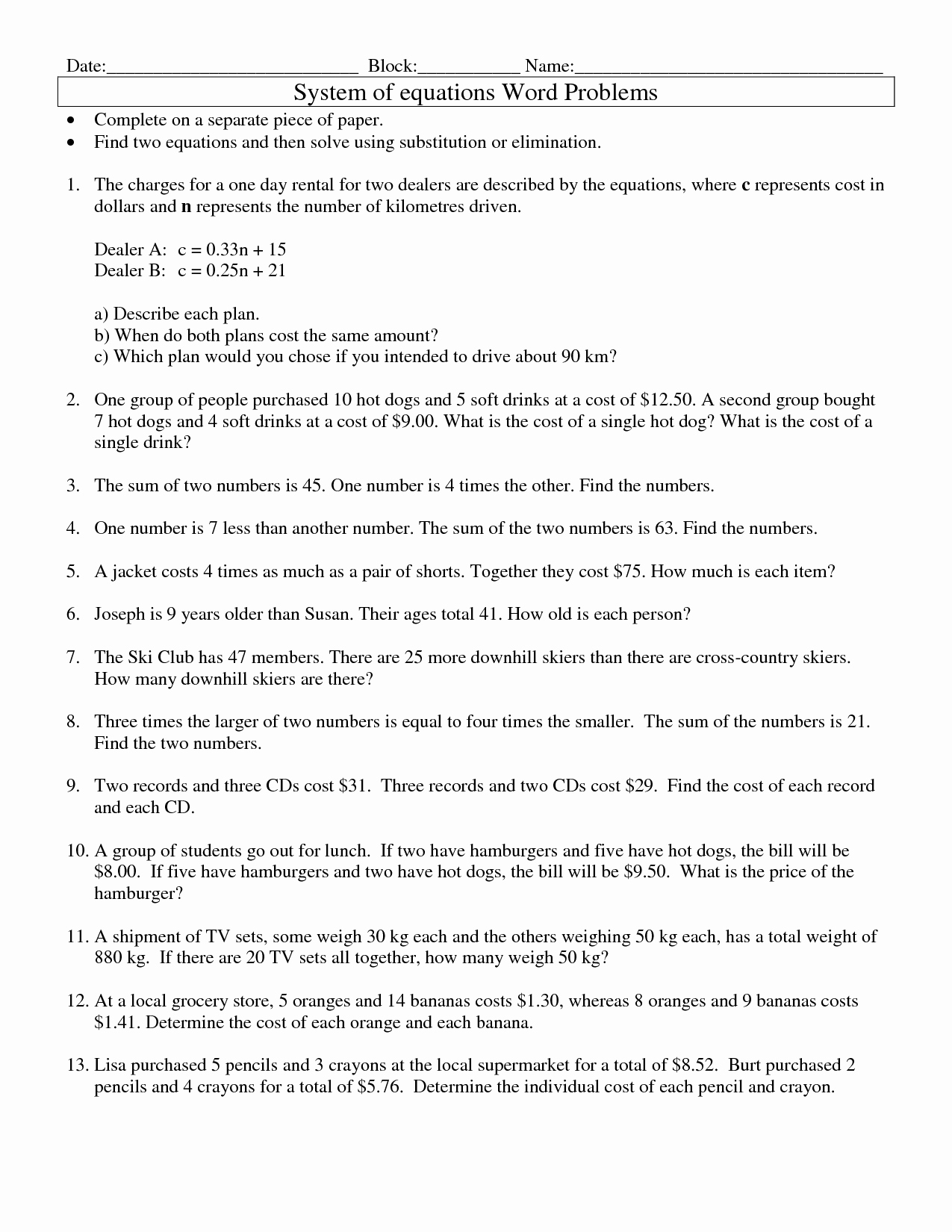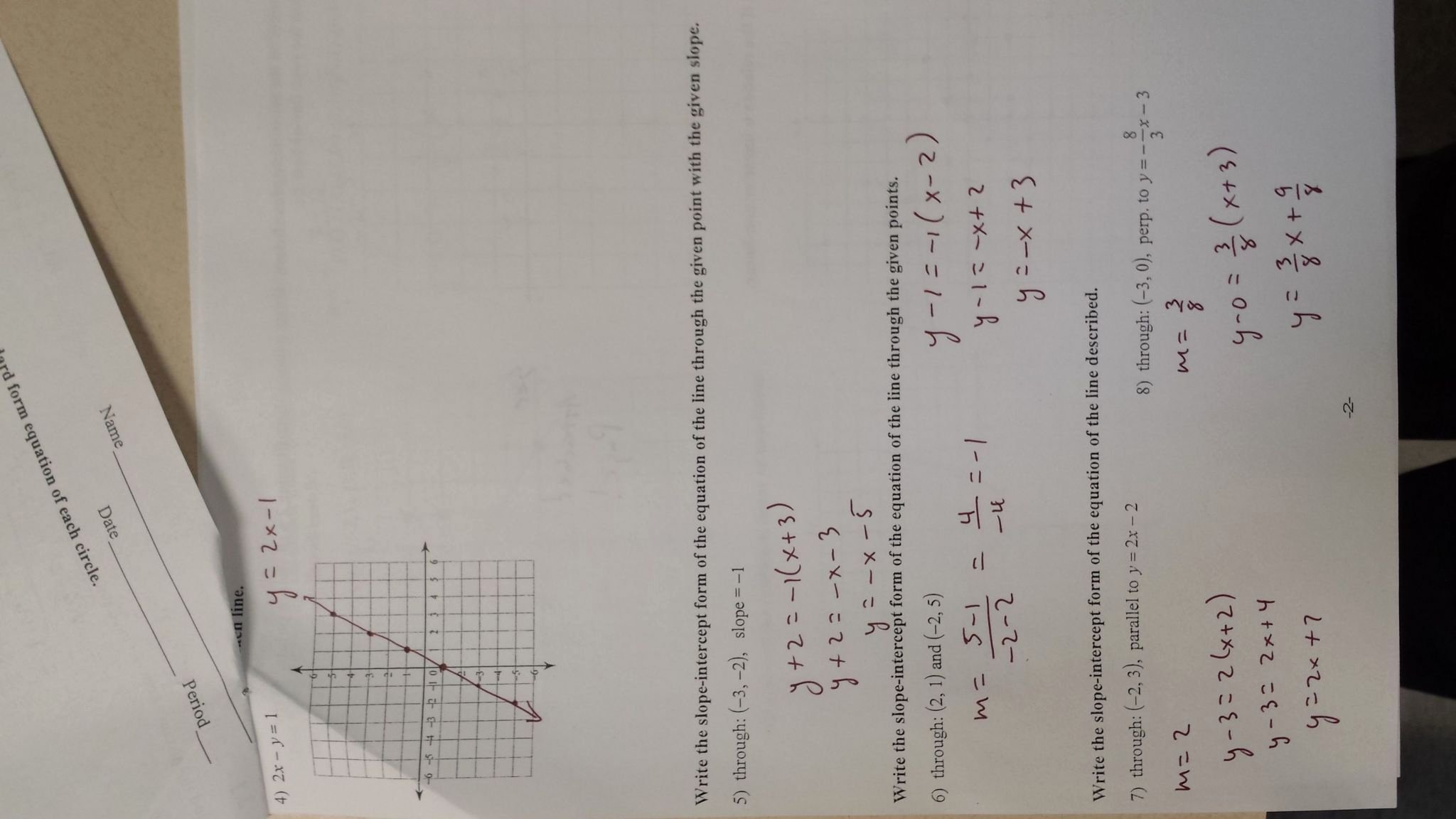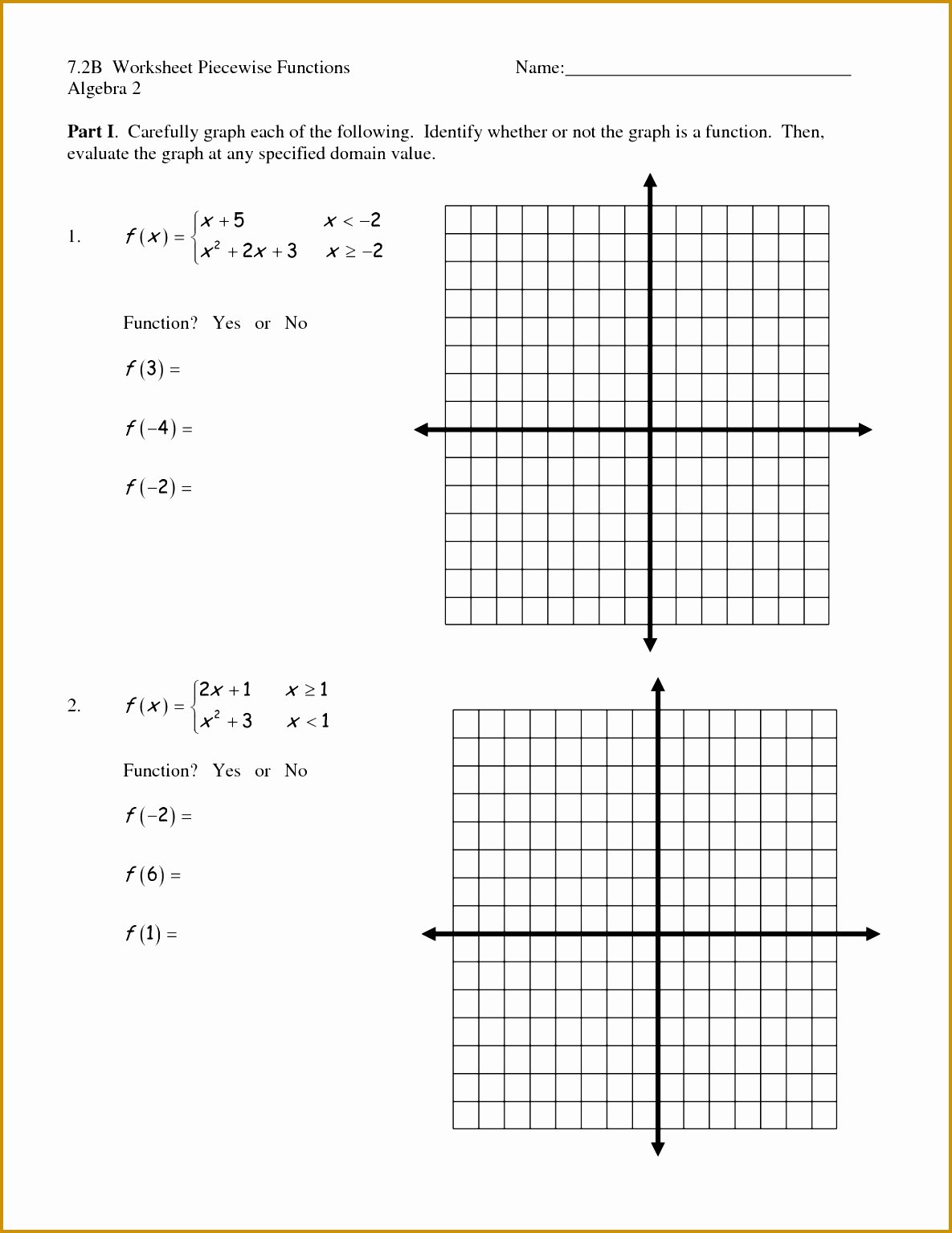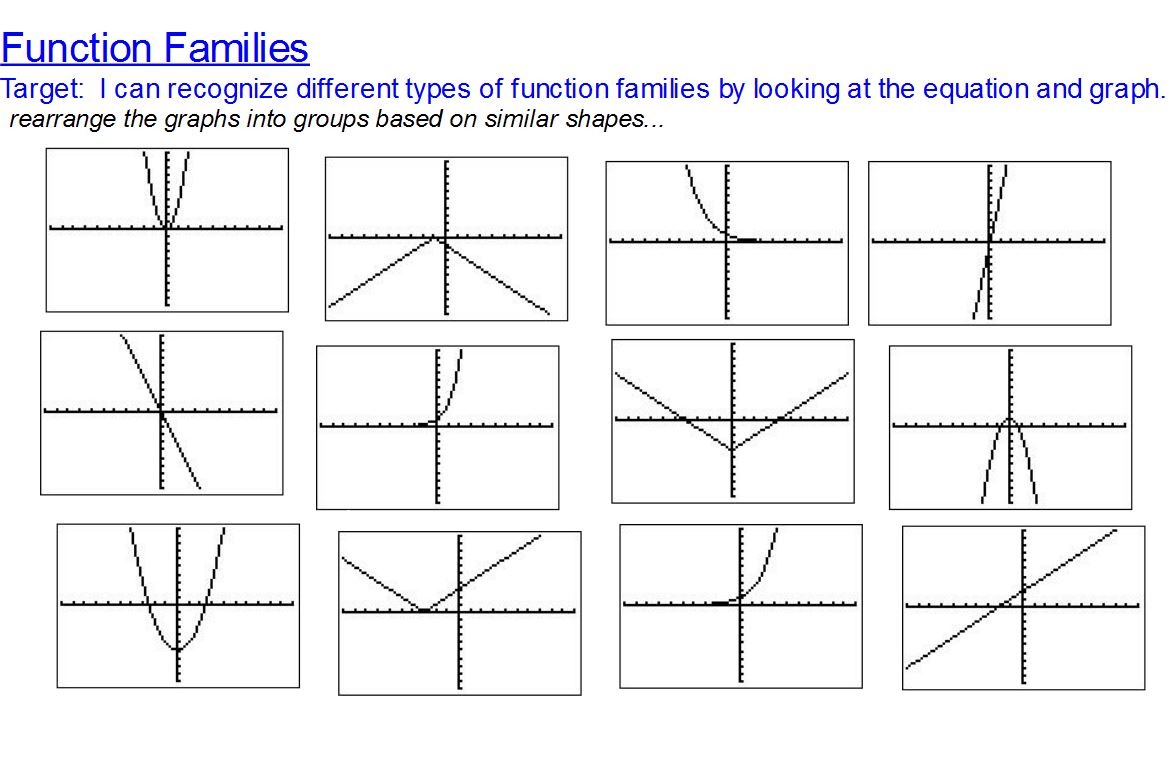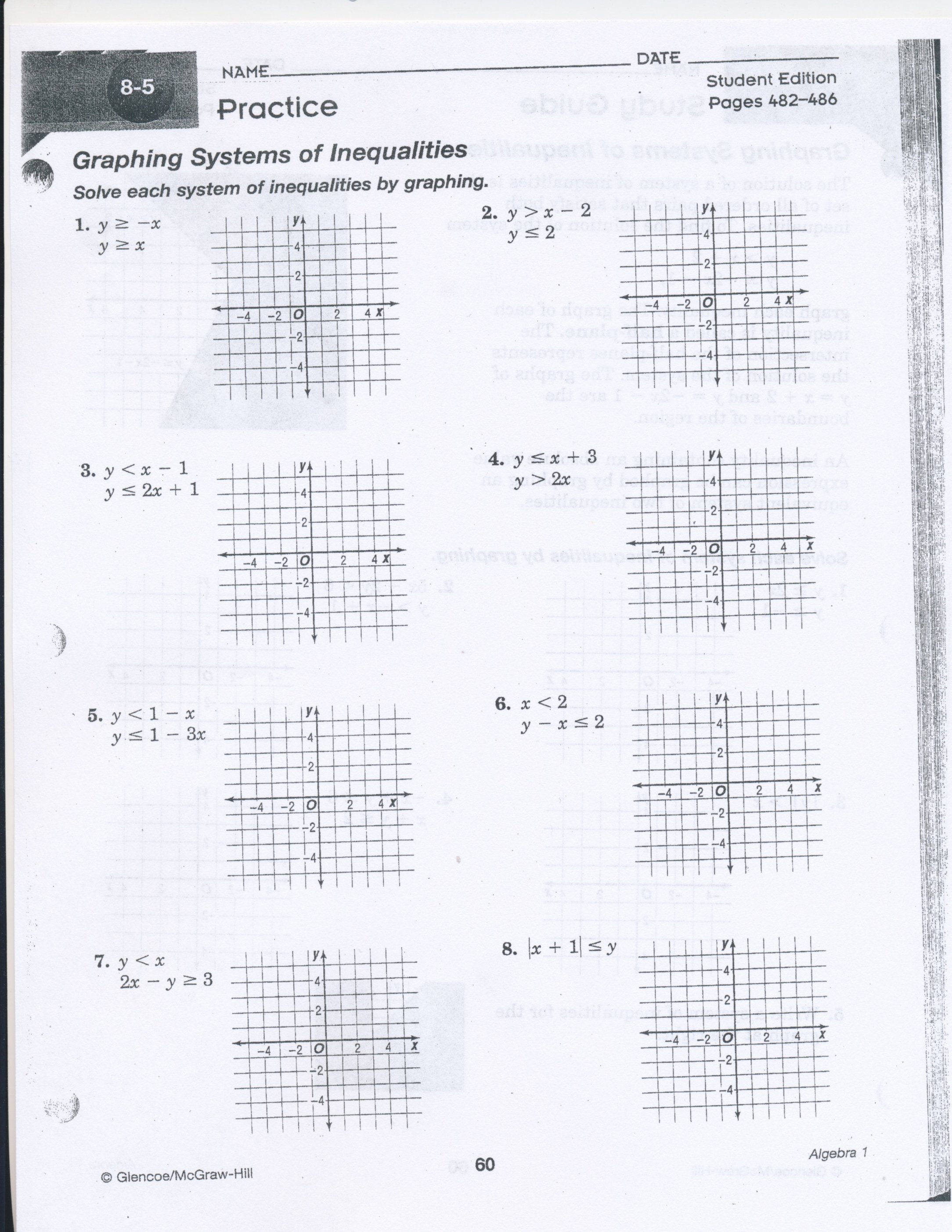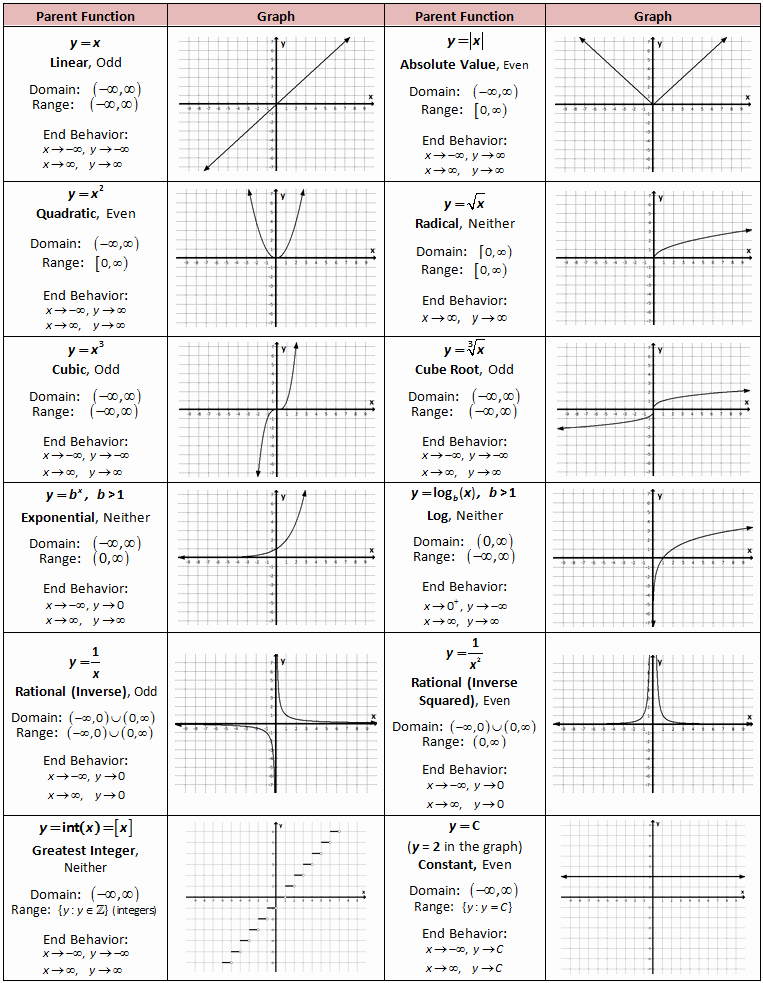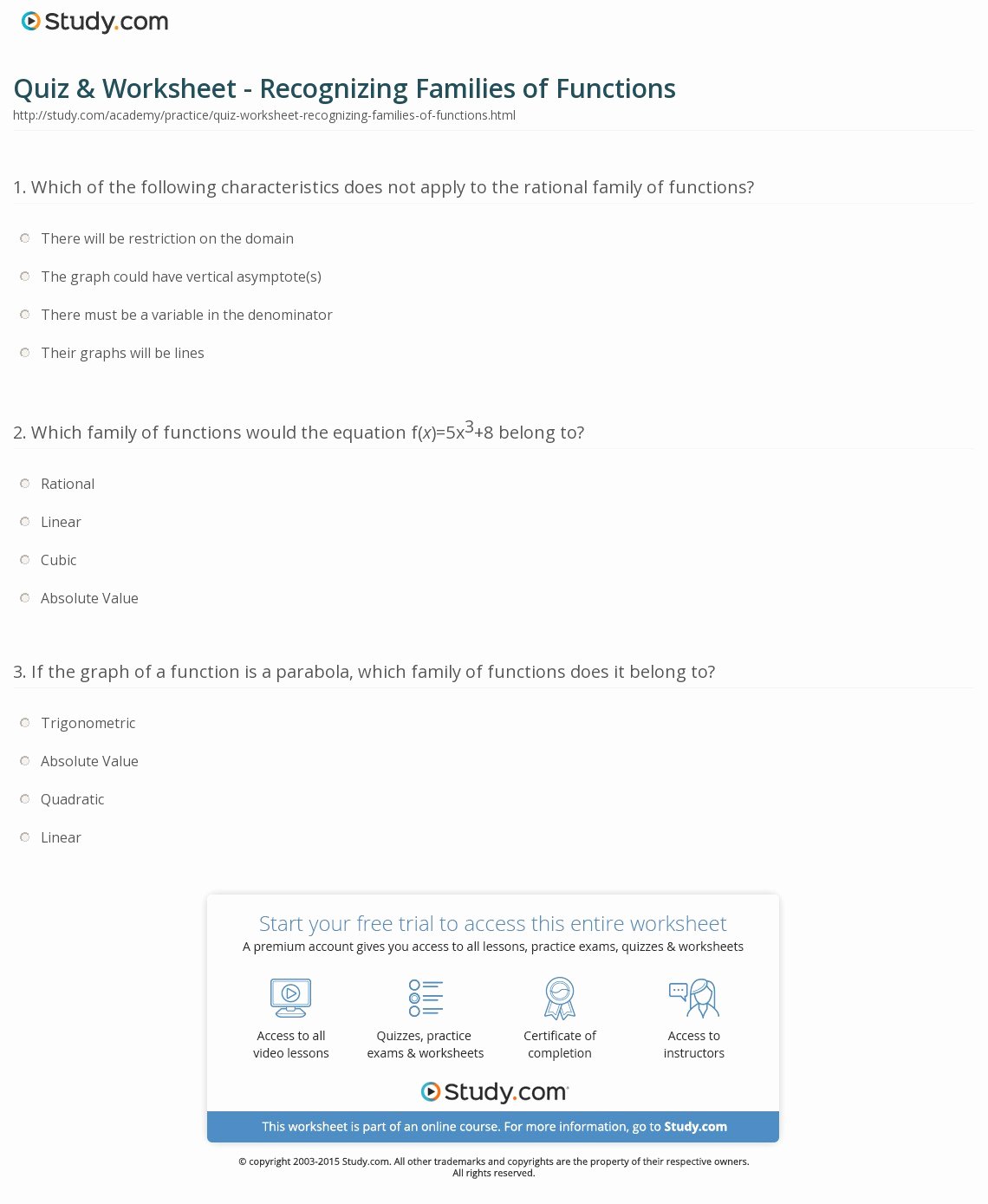Families Of Functions Worksheet - All of the functions that belong to the same family behave similarly to each other,. 7 the table below shows the value of a particular car. In this activity you will investigate families of functions. Justify your choice of a function type. • i can identify the function family to which a. Parent functions there are sets of functions, called families, in which each function is a transformation of a special function called the. Distinguish between situations that can be modeled with linear functions and with exponential functions. Graph and describe transformations of functions. State the type of function that best fits the given data. Families of functions 1 1 one characteristic of all linear functions is that they change by 1) equal factors over equal intervals.
In this activity you will investigate families of functions. 7 the table below shows the value of a particular car. All of the functions that belong to the same family behave similarly to each other,. Parent functions there are sets of functions, called families, in which each function is a transformation of a special function called the. Graph and describe transformations of functions. Distinguish between situations that can be modeled with linear functions and with exponential functions. • i can identify the function family to which a. State the type of function that best fits the given data. Justify your choice of a function type. Families of functions 1 1 one characteristic of all linear functions is that they change by 1) equal factors over equal intervals.
Families of functions 1 1 one characteristic of all linear functions is that they change by 1) equal factors over equal intervals. Graph and describe transformations of functions. • i can identify the function family to which a. Parent functions there are sets of functions, called families, in which each function is a transformation of a special function called the. All of the functions that belong to the same family behave similarly to each other,. Justify your choice of a function type. Distinguish between situations that can be modeled with linear functions and with exponential functions. 7 the table below shows the value of a particular car. In this activity you will investigate families of functions. State the type of function that best fits the given data.
Families of Functions Worksheet
• i can identify the function family to which a. All of the functions that belong to the same family behave similarly to each other,. Graph and describe transformations of functions. Justify your choice of a function type. Distinguish between situations that can be modeled with linear functions and with exponential functions.
Families of Functions Worksheet Worksheets Library
7 the table below shows the value of a particular car. Justify your choice of a function type. All of the functions that belong to the same family behave similarly to each other,. Distinguish between situations that can be modeled with linear functions and with exponential functions. Families of functions 1 1 one characteristic of all linear functions is that.
50 Families Of Functions Worksheet
Families of functions 1 1 one characteristic of all linear functions is that they change by 1) equal factors over equal intervals. State the type of function that best fits the given data. Distinguish between situations that can be modeled with linear functions and with exponential functions. In this activity you will investigate families of functions. • i can identify.
50 Families Of Functions Worksheet
In this activity you will investigate families of functions. Parent functions there are sets of functions, called families, in which each function is a transformation of a special function called the. Justify your choice of a function type. State the type of function that best fits the given data. Distinguish between situations that can be modeled with linear functions and.
50 Families Of Functions Worksheet
• i can identify the function family to which a. Parent functions there are sets of functions, called families, in which each function is a transformation of a special function called the. Graph and describe transformations of functions. Families of functions 1 1 one characteristic of all linear functions is that they change by 1) equal factors over equal intervals..
Function Families PDF Worksheets Library
Graph and describe transformations of functions. • i can identify the function family to which a. In this activity you will investigate families of functions. All of the functions that belong to the same family behave similarly to each other,. Parent functions there are sets of functions, called families, in which each function is a transformation of a special function.
50 Families Of Functions Worksheet
All of the functions that belong to the same family behave similarly to each other,. Parent functions there are sets of functions, called families, in which each function is a transformation of a special function called the. Justify your choice of a function type. Graph and describe transformations of functions. Distinguish between situations that can be modeled with linear functions.
50 Families Of Functions Worksheet
In this activity you will investigate families of functions. Distinguish between situations that can be modeled with linear functions and with exponential functions. Justify your choice of a function type. • i can identify the function family to which a. 7 the table below shows the value of a particular car.
Linear Functions Algebra Two Worksheets Library
Parent functions there are sets of functions, called families, in which each function is a transformation of a special function called the. Families of functions 1 1 one characteristic of all linear functions is that they change by 1) equal factors over equal intervals. Distinguish between situations that can be modeled with linear functions and with exponential functions. • i.
50 Families Of Functions Worksheet
Justify your choice of a function type. State the type of function that best fits the given data. Graph and describe transformations of functions. • i can identify the function family to which a. Distinguish between situations that can be modeled with linear functions and with exponential functions.
Distinguish Between Situations That Can Be Modeled With Linear Functions And With Exponential Functions.
• i can identify the function family to which a. Families of functions 1 1 one characteristic of all linear functions is that they change by 1) equal factors over equal intervals. State the type of function that best fits the given data. 7 the table below shows the value of a particular car.
Graph And Describe Transformations Of Functions.
All of the functions that belong to the same family behave similarly to each other,. Justify your choice of a function type. Parent functions there are sets of functions, called families, in which each function is a transformation of a special function called the. In this activity you will investigate families of functions.

